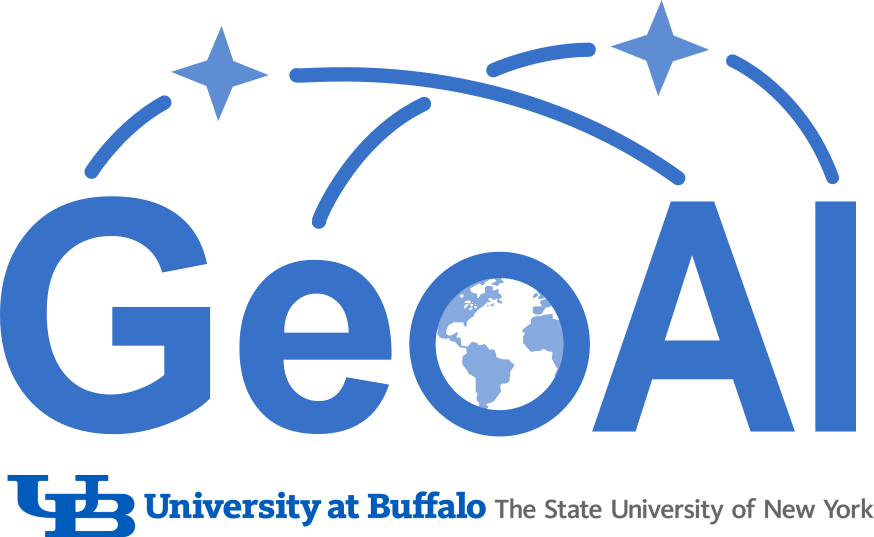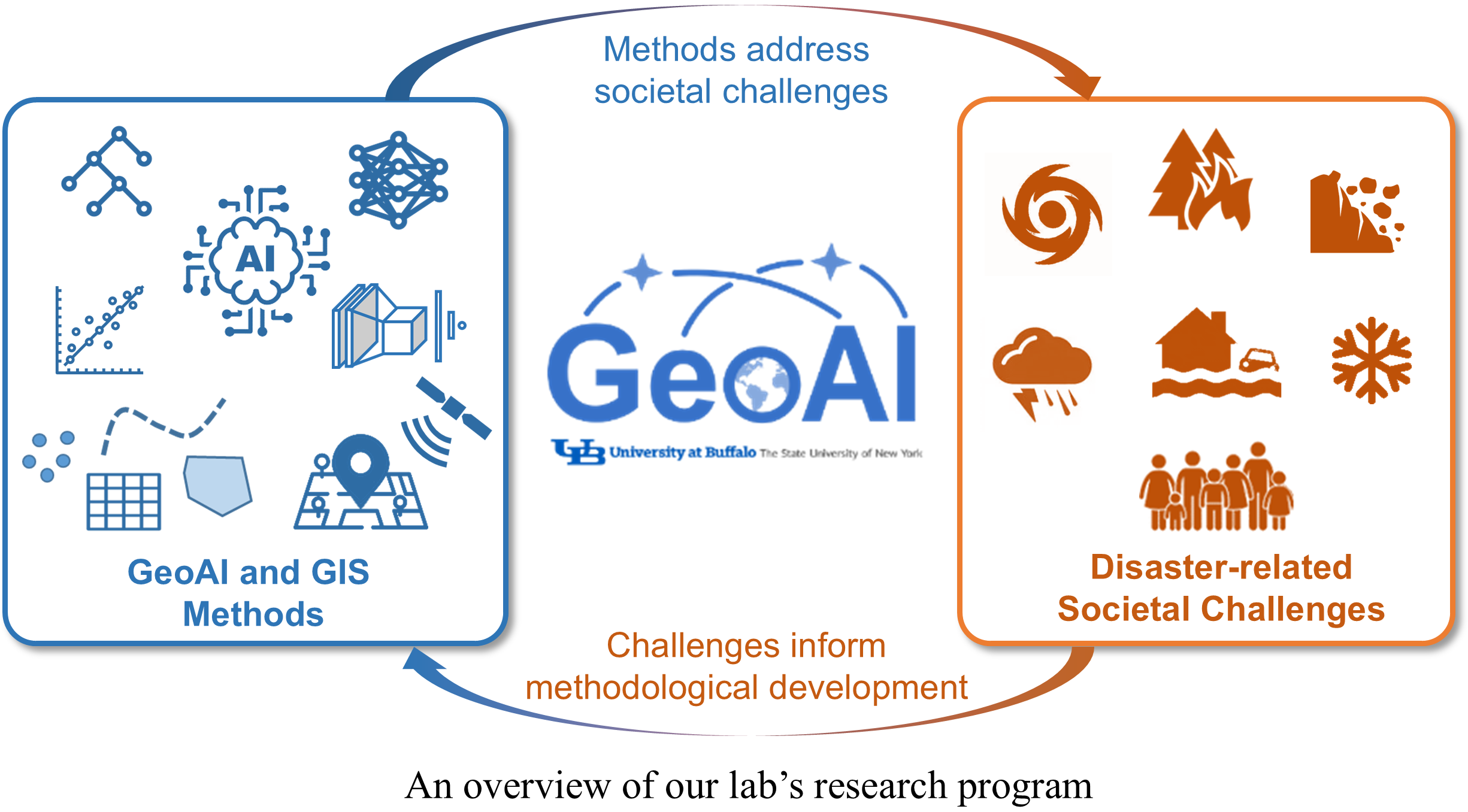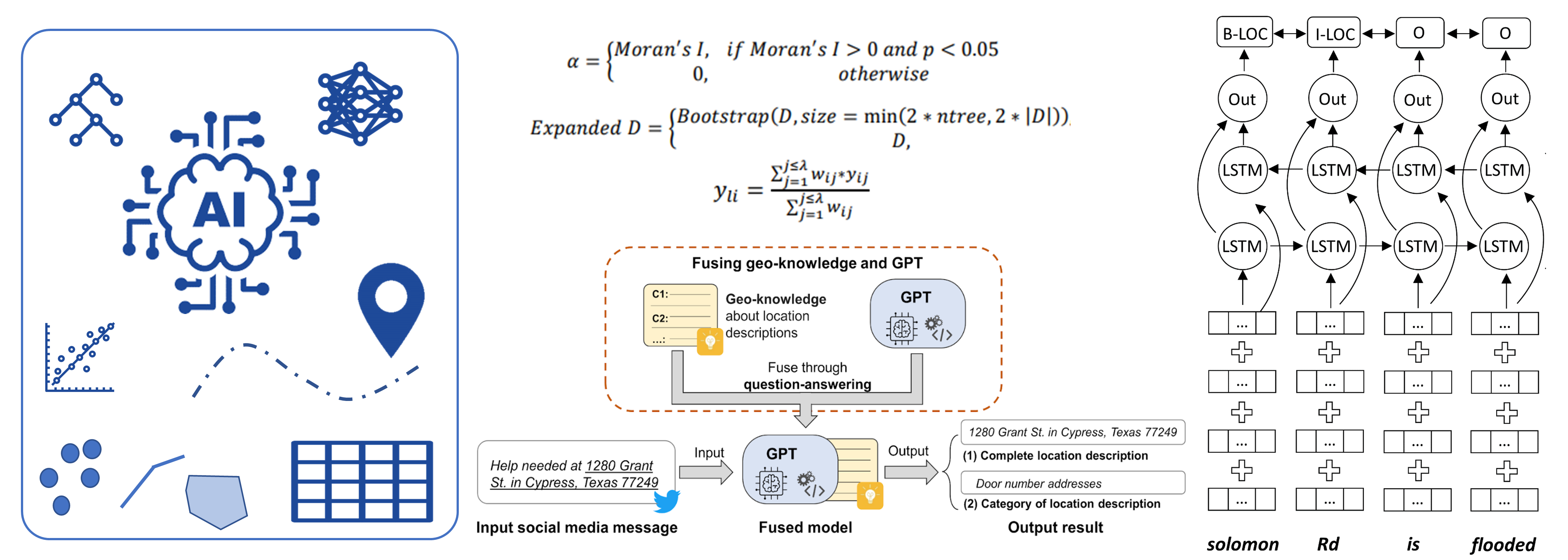
Welcome to the UB Geospatial Artificial Intelligence (GeoAI) Lab! We are a research group located within the Department of Geography at the University at Buffalo (UB), The State University of New York (SUNY). We are also affiliated with the UB AI and Data Science Institute and the UB Center for Geological and Climate Hazards. We integrate geospatial data, GIS, and AI methods to study human-environment interactions and to address societal challenges related to natural disasters such as hurricanes, wildfires, and winter storms. Two types of research are conducted in our lab:
- Use-inspired research to address disaster-related societal challenges
- Methodological research on GeoAI and GIS methods
Together, we hope our research contributes to a more sustainable future.


Methodological research on GeoAI and GIS methods: Our research in this area aims to improve existing GeoAI and GIS methods or to develop new methods and tools when necessary. These methods and tools can increase our ability to analyze geospatial data and enable us to better address disaster-related societal challenges. Examples include geo-knowledge-guided large language models (LLMs) for disaster-related location description extraction, a Python based geographical random forest model (PyGRF), and a geospatial data annotation tool called GALLOC. 